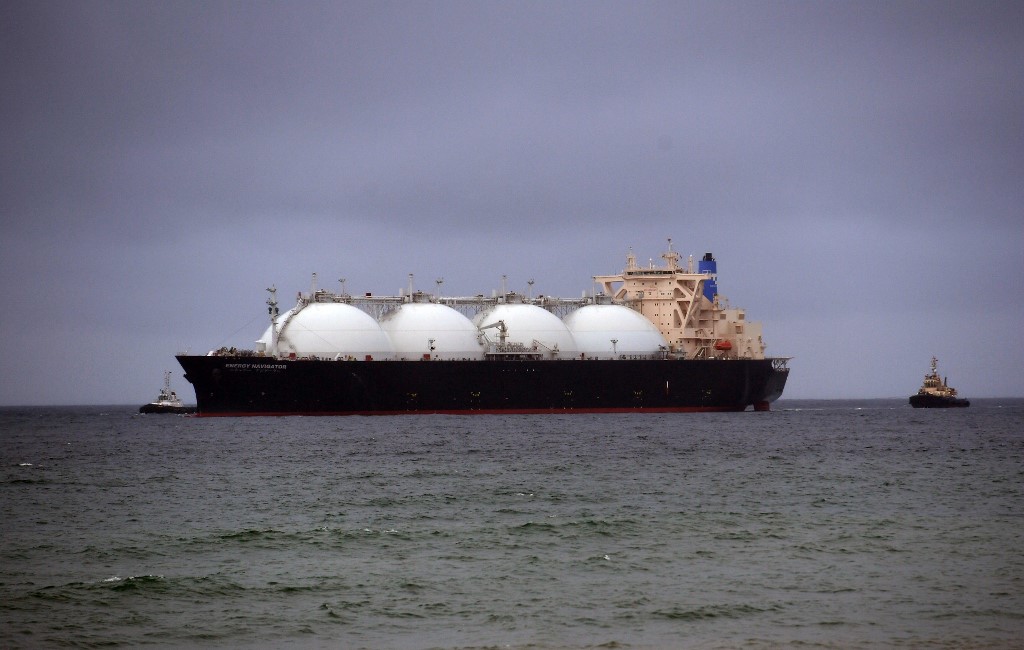(ATF) State-run oil giant Saudi Aramco, the world’s largest oil company, is still trying to make a pivot away from over reliance on oil revenue – this time seizing its decades’ long relationship with China in the process.
Saudi Aramco CEO Amin Nasser said that the company was keen on exporting natural gas to China, its largest crude oil customer, to help Beijing make the transition to cleaner fuels. He made his remarks at the China Development Forum in Beijing on Wednesday.
“We can also supply bridge fuels that will help meet China’s growing need for clean energy, as we expand into international gas and LNG [liquefied natural gas],” Nasser said. “There are opportunities to collaborate in the development and use of clean future fuels such as hydrogen and other chemicals-type clean fuels.”
The Asia Eight: Daily must-reads from world’s most dynamic region
He added that the technology to transform crude oil directly into chemicals is at “an advanced stage,” and pointed out that Aramco is already working with Beijing’s Tsinghua University on a pilot project for the catalytic transformation of oil to chemicals.
Nasser’s comments come just a little more than a month after Chinese President Xi Jinping surprised a UN conference by pledging that China – the world’s largest oil importer and largest greenhouse gas emitter – would become carbon neutral before 2060, while reducing its emissions significantly within the next 10 years.
However, scant details were given on how the country of 1.4 billion people will achieve that task, either when Xi made this announcement or at the country’s meeting to draw up its 14th Five Year Plan in October. But energy planners in Beijing will obviously have to make a hard and quick pivot away from coal used for power production to more cleaner burning natural gas, renewables and carbon capture.
Saudi Arabia, for its part, the world’s third largest oil producer after the US and Russia, and the world’s largest crude oil exporter and de facto leader of the Organization of the Petroleum Producing Countries (OPEC), has had a difficult run this year due to plunging oil prices after demand plunged when the Covid-19 pandemic hit countries around the world.
Even before the current global oil price bloodbath, well beneath the kingdom’s fiscal break-even point, it was keen on investing in LNG projects in the US to diversify its income stream away from over-reliance on oil production. However, even Saudi Arabia’s LNG investment plans have run into headwinds this year.
Nasser said in October that Aramco’s goal to become an international player in the LNG market may take longer to realize as the company has shifted its investment focus to the “long-term.” The company had already postponed a planned LNG export project in the US, and changed plans to build a crude-to-chemicals complex in Saudi Arabia.
Strategic moves
On another level, Aramco’s announcement that it wants to capture China’s growing LNG market can be seen as a strategic move against its oil producing competitors who for decades have fought bitterly over oil market share in China. Stiff competitors include Russia, the world’s second largest crude oil producer, Iraq and other OPEC heavyweights.
Saudi Arabia, however, will have its hands full to not only keep price competitive with Russian crude, but to compete with Russia for LNG market share since Russian energy companies already have significant gas pipeline deals in place with China.
Moreover, Russian companies already have LNG export projects in operation and more planned, while Aramco is still in its early stages of LNG development, and at least in the mid-term will have to source LNG from other countries.
To its credit, Saudi Arabia has been increasing its gas production. On August 6, Aramco reportedly achieved a record single-day gas production level of 10.7 billion standard cubic feet (bscfd), from both conventional and unconventional fields.
Aramco’s goal of exporting LNG to China, adds another layer of complexity to Beijing’s LNG procurement plans. Gas was already earmarked to make up at least 10% of the country’s energy mix by this year, and 15% by 2030, though that amount may now increase given Xi’s carbon neutral pledge.
China, the second largest LNG importer after Japan, is also forecast to become the world’s largest LNG importer by around 2022, helping to revolutionize LNG markets that are still pivoting away from long-term off-take agreements, and restrictive contractual clauses into more short-term and pure spot deals, similar in some aspects like crude oil and iron ore – two of the world’s top traded commodities.
Aramco’s LNG plans will also give Chinese energy companies more leverage with producers, including the US, Australia, Qatar, Malaysia, Indonesia, Russia, and others. Beijing energy planners now have another energy arrow their arsenal, which would allow it to drive harder bargains over future gas prices, contractual stipulations and supply conditions, and coming full circle, could just help it meet its 2060 carbon neutral goals after all.
























